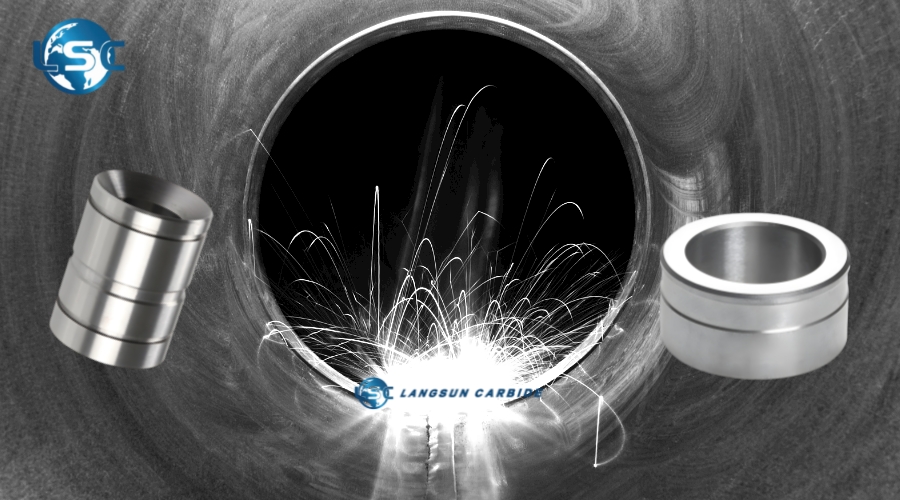Cemented carbide, also commonly referred to as tungsten carbide, is used in industrial applications where extreme durability is required. Tungsten carbide is a composite material consisting of particles of tungsten carbide bonded together by a metallic binder, usually cobalt or nickel, and is a material known for its exceptional hardness and wear resistance. Its unparalleled hardness (typically 89-93 HRA, Rockwell Hardness Level A) allows carbide wear parts to withstand environments where conventional metals would deteriorate rapidly.
Tungsten carbide is a unique material characterized by high hardness and durability. It is prepared by mixing tungsten carbide powder with a binder metal (usually cobalt) and then sintering it at high temperatures. The end result is a dense, hard material that maintains its integrity even under extreme conditions, in which tungsten carbide particles (70-97%) are bonded to a metallic cobalt matrix (3-30%). This unique microstructure has the following synergistic properties:
● WC phase: hexagonal crystals with a hardness of up to 2,200 HV (Vickers Hardness)
● Co binder: provides fracture toughness by absorbing impact energy
| Parameter | Effect on Hardness | Typical Range |
|---|---|---|
| WC Grain Size | Finer = harder | 0.2-10 μm |
| Cobalt Content | Lower = harder | 3-30 wt% |
| Carbon Balance | Off-stoichiometry reduces hardness | WC:C = 1:1 ± 0.05% |

Hardness Measurement Standards
Rockwell A (HRA): Industry standard for carbides (diamond cone, 60 kgf load)
Vickers (HV): Micro-indentation testing of specific phases
Knoop (HK): For brittle materials with anisotropic crystals
Conversion: 90 HRA ≈ 1,500 HV ≈ 12.4 GPa
| Material | Hardness (HRA) | Vickers (HV) | Relative Wear Resistance |
|---|---|---|---|
| Cemented Carbide | 89-93 | 1,200-2,200 | 1.0 (Baseline) |
| Tool Steel (H13) | 70-75 | 650-850 | 0.15-0.25 |
| Engineering Ceramic | 92-94 | 2,000-3,000 | 1.3-1.8 (but brittle) |
| Titanium Alloy | 65-70 | 350-450 | 0.10-0.15 |
Data: ASM Handbook Vol. 2 (2021); Relative wear resistance via ASTM G65 dry sand test
The exceptional hardness of tungsten carbide translates to superior wear resistance. This property is crucial in applications involving high friction, abrasion, or impact, such as cutting tools and drill bits. Tungsten carbide components maintain their sharpness and structural integrity longer than those made from softer materials.
Due to its hardness, tungsten carbide parts have a longer lifespan compared to components made from other materials. This reduces the frequency of replacements and maintenance, leading to lower operational costs and increased productivity.
The hardness of tungsten carbide allows for precise machining and cutting operations. Tools made from tungsten carbide can achieve high accuracy and smooth finishes, enhancing the quality of manufactured products.
Tungsten carbide retains its hardness and strength at elevated temperatures, making it suitable for applications in harsh environments, such as metalworking and aerospace industries.
The hardness of tungsten carbide is a defining characteristic that offers numerous advantages in industrial applications. Its superior wear resistance, extended service life, and ability to perform under extreme conditions make it an invaluable material across various sectors. Langsun Carbide is committed to providing high-quality tungsten carbide products tailored to meet the specific needs of our clients. Our expertise and dedication to innovation ensure that our products deliver exceptional durability and reliability in even the most demanding applications.